This is Clouds Form Over Land, weekly writing about resilience, imperfectionism, and our relationship to the earth.
Gather an armful of scrap fabric, spent clothes, and any other cloth that falls into your household's “rag” category. The bulk of my most recent rug was a bathrobe that I sewed in 2018 and indigo dyed last year to eek out a little more use. I also retired a sewing experiment gone array, thus freeing myself from its glare from the WIP pile.
Process the fabric into strips. A width of three fingers or so will make a sturdy rug that can still be run through a home sewing machine. The fabric I used is woven, so I could snip the fabric at the edge and rip it into strips along the warp. This took about 30 minutes a paired well with a podcast and a glass of water.
Braid. Tie a simple knot in the ends of three strips of fabric and braid them together by alternately laying one strip over the others. When one strip has only a few inches remaining, grab another, wrap it around the bitter end, and keep going. This simple step makes building the braid fairly hard to put down — it’s “just one more row” feeling that knitters often find during a fun pattern.
Sew. This step could be done by hand with needle and thread or at a machine. Both methods are active meditations that lead to a sturdy rug. Pick your poison.
Take out the knot at the end of the braid and stitch a line across to hold the three strands together. Cut off rough ends. Bend the braid so that the bitter end and working end are side by side. A shorter bend will make a more circular rug, longer will result in an oval.
If sewing with a machine, have the working end feed through the inner side so that the bulk of the rug can twirl around outside. Set the machine on the widest zigzag stitch pattern and sew, catching one side of the braid on the zig and the other on the zag.For a flatter rug, stack some books next to the machine. When in doubt, ease the tension on the working end. Baskets are sewn by tilting the sewn part perpendicular to the machine — this will stack the rows and create height. A cool project as well, but perhaps not what you’re going for at the moment.
Enjoy! Place it in a high-traffic area, like entryways or that spot you stand when loading the laundry or doing dishes. First attempts may come out a little bumpy, but I promise it will flatten out with use.
Is this level of thrift is really required in 2023?
A rag rug can be purchased on Amazon for $24 — 3.3 work hours at minimum wage in the US. Perhaps you earn more than that and purchasing a similar floor covering gobbles up mere minutes. Perhaps you earn more than that and scale your floor covering stylings to even more hours of your pay.
Meanwhile, the average US consumer throws away 81.5 pounds of clothing per year. This amounts to more than two checked suitcases by TSA standards. A pound is 3-6 clothing items, or at least $30 new at the store. By the time they reach the bulging racks at Goodwill, they can be sold for $1.29/pound, if not directly thrown away there. Aja Barber writes deeply about the connections between consumerism, climate, and colonialism.
After sailing through some of the more remote island communities in the world, it’s astounding that that much fabric is being passed along as trash. The uniform weave or knit of fabric is impossible without the time-saving machines that create durability and softness. Does the short time in the closet creates happiness proportional to the time required for the materials to decay back into a life cycle? Not to mention the methane gas and other harmful chemicals and dyes leached into soil as these garmets die. It seems doubtful that the revolving door in our closets create happiness proportional to the work hours required to feed them.
Turning rags into rugs processes some of the waste in our wakes. While 81.5 pounds of clothing cast aside annually is decidedly an upstream problem, the humble rug may keep a pound or two outside of the landfill and in the process bring back some sense of value for these materials. This shift of destructing a garment and transforming it to another purpose is also a fun and relaxing activity.
By learning to work with materials, perhaps we can curb materialism?

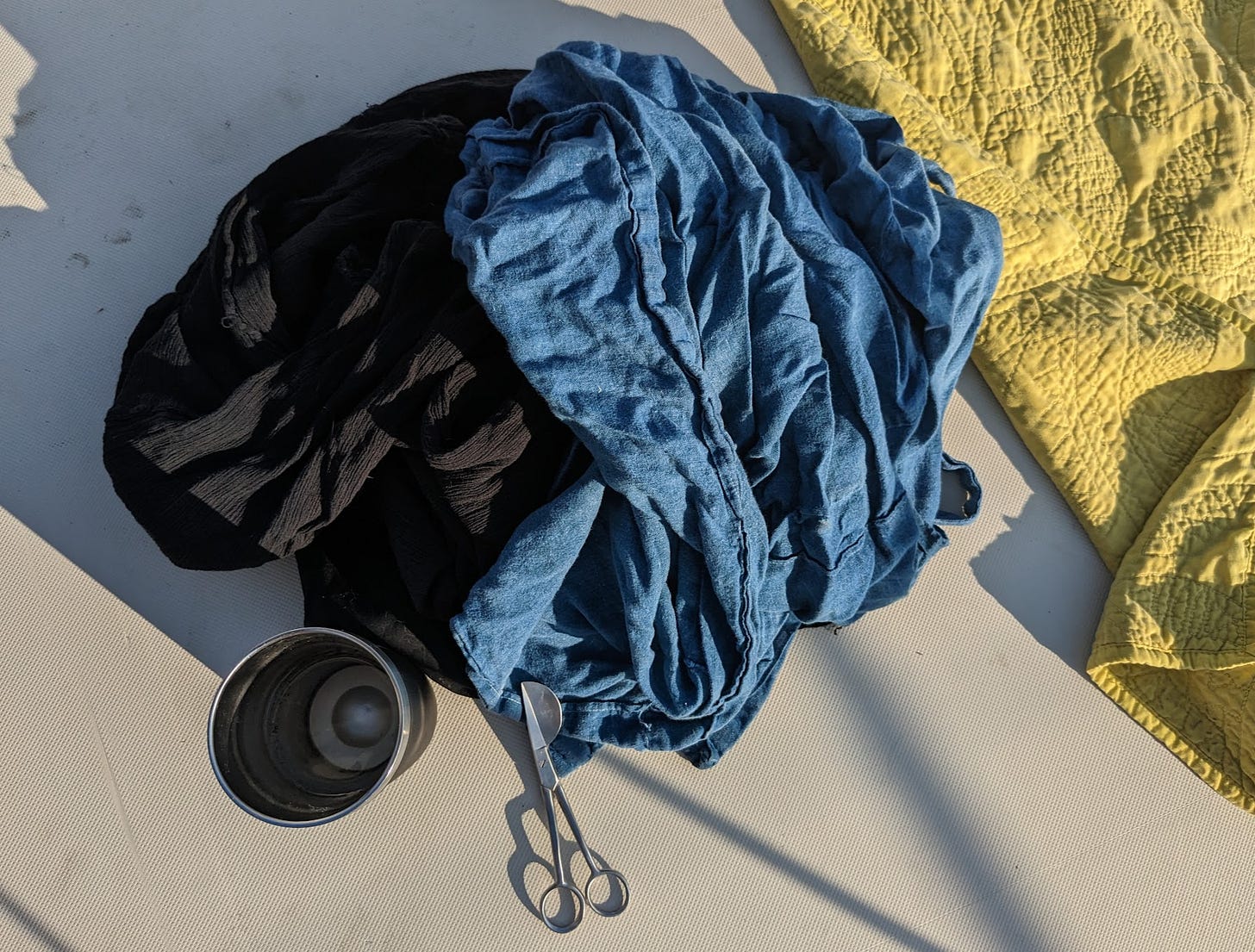
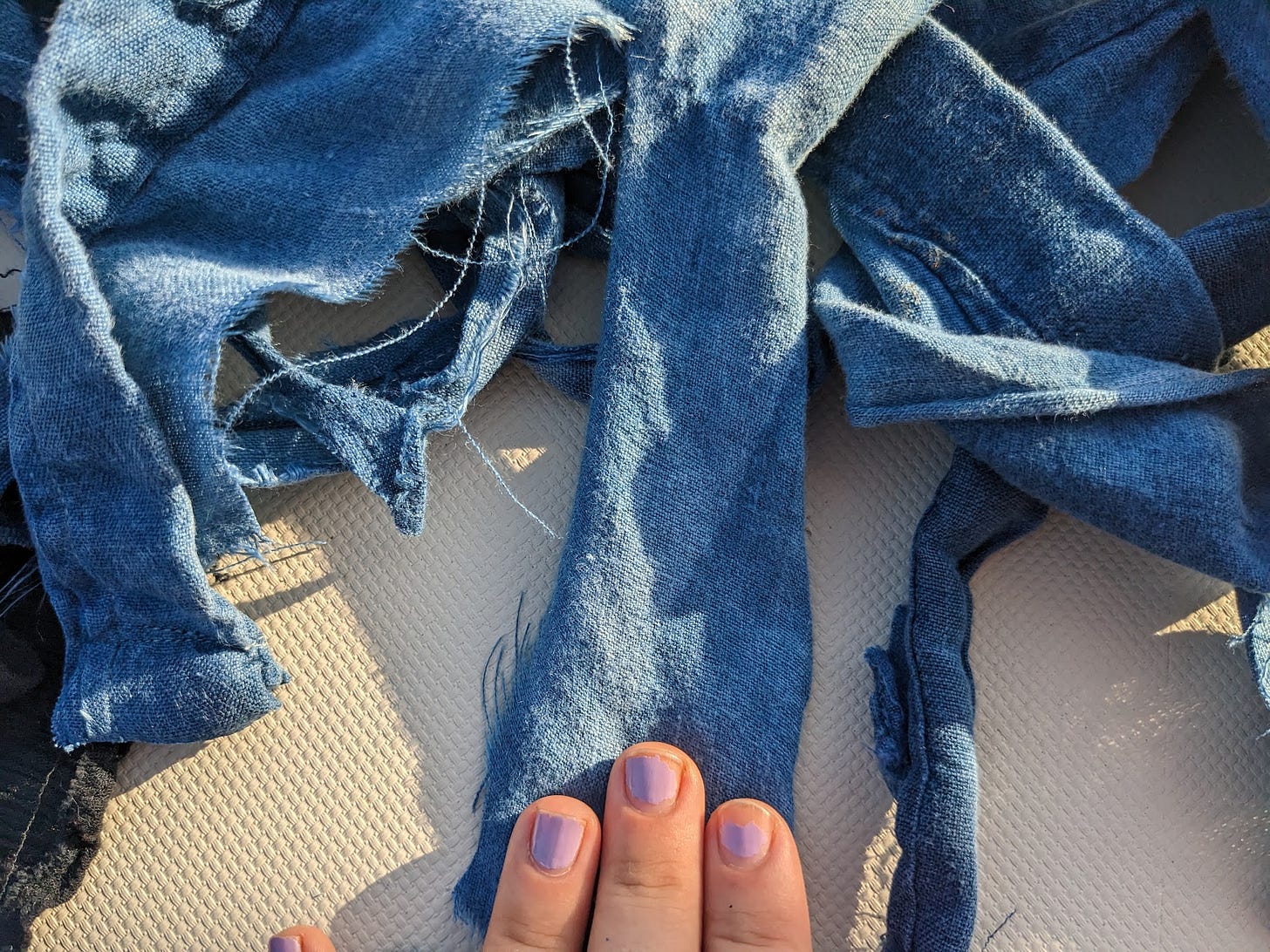


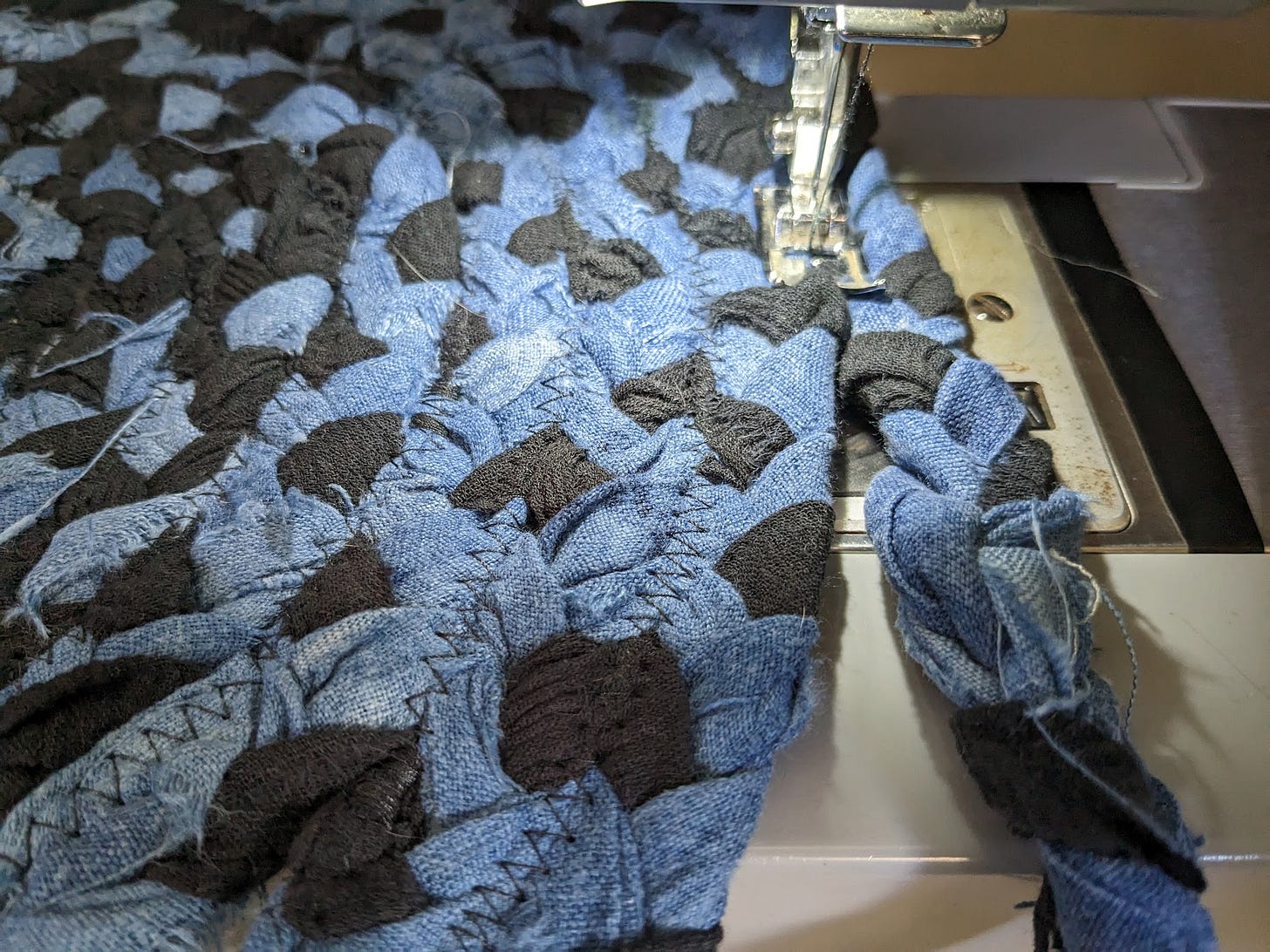
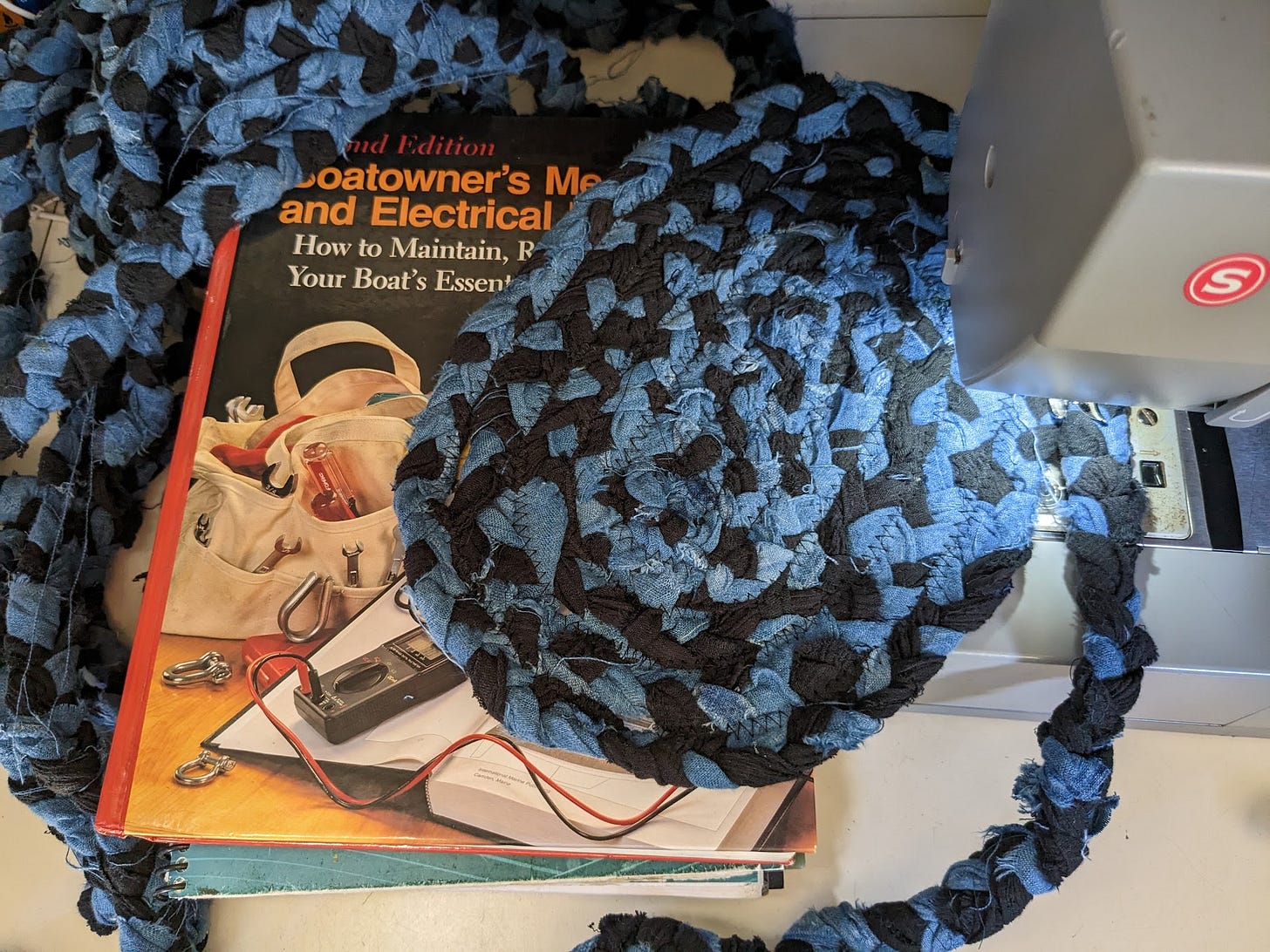
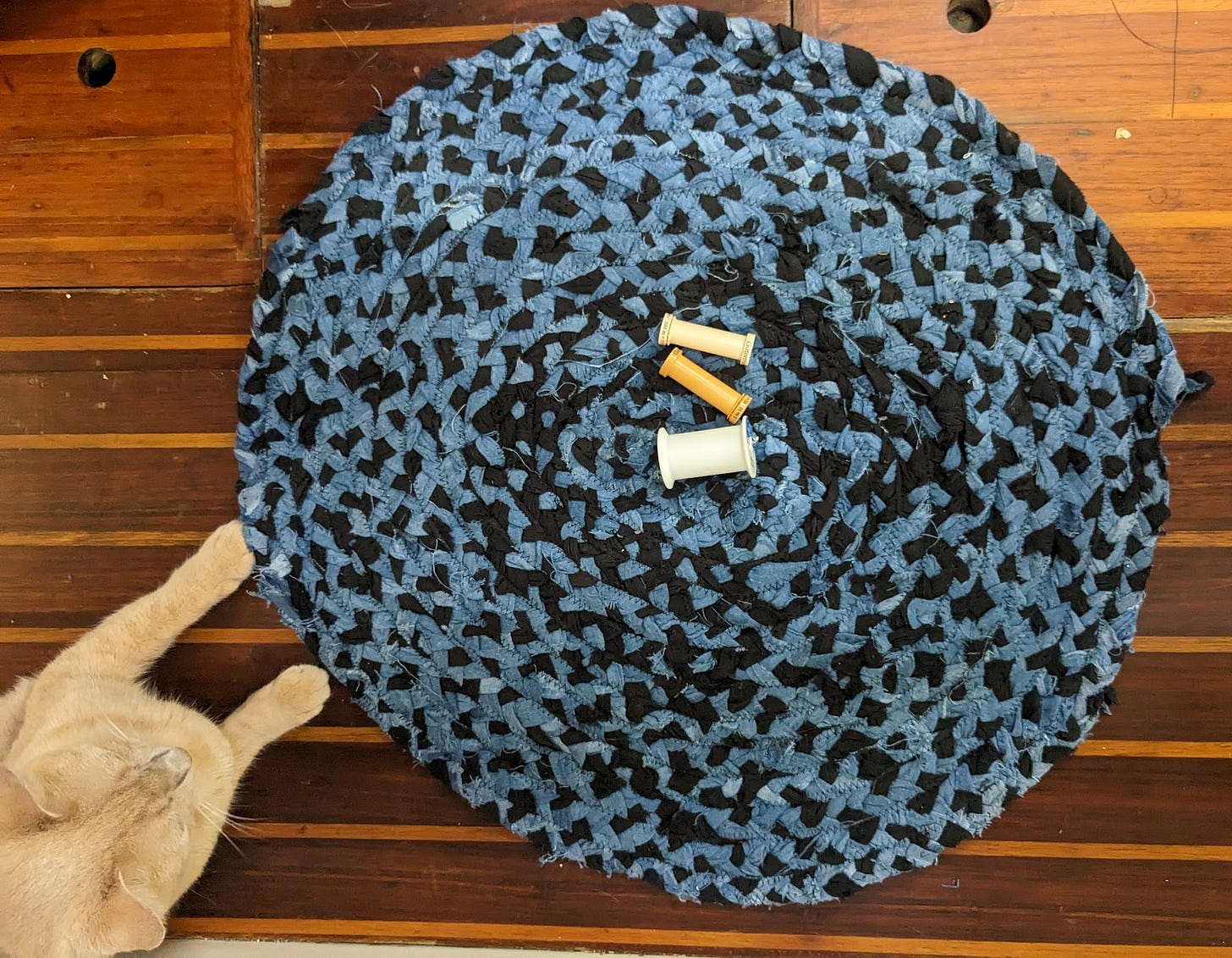
Beautiful! what a creative idea!
Love it! Before covid, I held annual clothes swaps for over 20 years. Still not ready to have 40+ women in my house at once, but I hope to be able to resume them soon. Some of my friends stopped buying clothes and relied on the clothes swaps. It's great to get ideas for stuff that can no longer be worn.